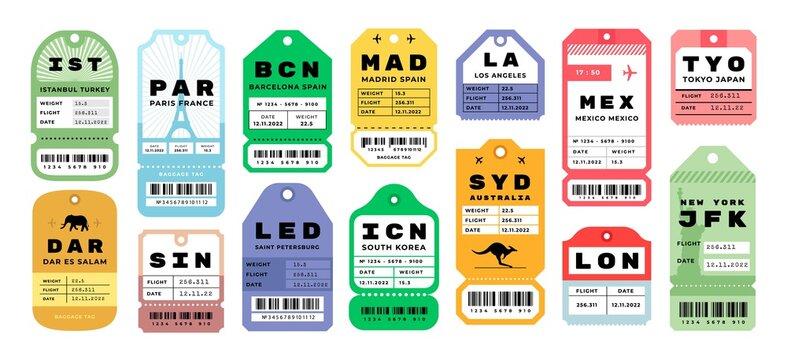
If you've ever booked a flight or worked in aviation, you're probably familiar with IATA airport codes—those three-letter identifiers like LAX for Los Angeles or JFK for New York. However, behind the scenes, there's another set of codes that play a critical role in global aviation: ICAO airport codes. These four-letter identifiers, established by the International Civil Aviation Organization (ICAO), provide a standardized naming system for airports worldwide, ensuring consistency in air traffic control and flight operations.
ICAO airport codes are unique four-letter alphanumeric identifiers assigned to airports by ICAO, a specialized agency of the United Nations responsible for international aviation regulations. Unlike IATA codes, which are primarily used for ticketing and passenger convenience, ICAO codes are essential for flight planning, air traffic control, and aviation operations.
The distinction between ICAO and IATA codes is crucial:
IATA Codes: Three-letter codes (e.g., LAX, JFK) used for commercial airline booking, baggage handling, and passenger information.
ICAO Codes: Four-letter codes (e.g., KLAX, KJFK) used in flight planning, air traffic control, and aviation communications.
While passengers rarely encounter ICAO codes, they are indispensable in professional aviation settings, including flight logs, weather reports, and international aviation databases.
ICAO codes follow a systematic structure that reflects geographic and regional characteristics. The first letter represents the geographical region, while the subsequent letters often signify a country and a specific airport within that country.
North America (Kxxx, Cxxx, Mxxx)
United States: Codes typically begin with 'K' (e.g., KLAX for Los Angeles, KJFK for New York JFK).
Canada: Uses 'C' as the prefix (e.g., CYYZ for Toronto Pearson International Airport).
Mexico and Central America: Start with 'M' (e.g., MMMX for Mexico City).
Europe (Exxx, Lxxx, Uxxx)
United Kingdom: Uses 'EG' (e.g., EGLL for London Heathrow).
Germany: Uses 'ED' (e.g., EDDF for Frankfurt).
Russia: Uses 'U' prefixes (e.g., UUEE for Moscow Sheremetyevo).
Asia and Oceania (Vxxx, Wxxx, Rxxx, Yxxx)
China: Uses 'Z' (e.g., ZBAA for Beijing Capital International Airport).
India: Uses 'V' (e.g., VABB for Mumbai).
Australia: Uses 'Y' (e.g., YSSY for Sydney).
Africa (Fxxx, Dxxx, Hxxx)
South Africa: Uses 'FA' (e.g., FAOR for Johannesburg).
Nigeria: Uses 'DN' (e.g., DNMM for Lagos).
Egypt: Uses 'HE' (e.g., HECA for Cairo).
ICAO airport codes are vital for various aspects of aviation, including:
Air Traffic Control (ATC): Pilots and controllers use ICAO codes to communicate precise airport locations.
Flight Planning: ICAO codes help flight dispatchers and pilots file accurate flight plans.
Weather Reporting: Meteorological reports use ICAO codes for precise location-based forecasts (e.g., METAR and TAF reports).
International Coordination: ICAO codes standardize airport identifiers across countries, reducing confusion in global aviation operations.
While IATA codes dominate airline ticketing and passenger experiences, ICAO airport codes serve as the backbone of aviation operations. Their structured, four-letter format ensures accuracy in air traffic management, flight planning, and regulatory compliance worldwide. Whether you're an aviation enthusiast or a professional in the field, understanding ICAO codes provides deeper insight into the complexity and precision of global air travel.
Back to Articles